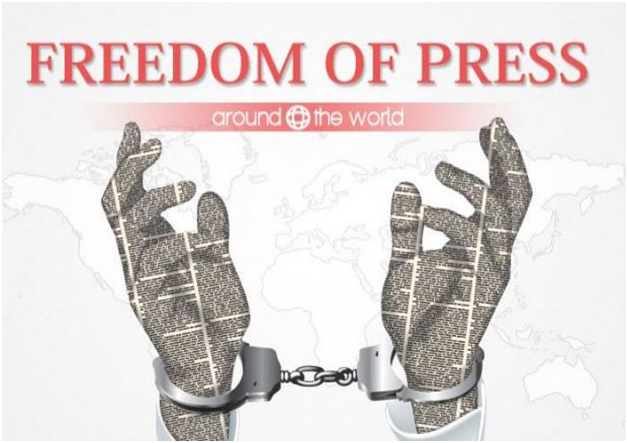Two Years Of PM Modi: A Media Embedded

NEW DELHI: At the Idea of India Conclave organized by Centre for Policy Analysis at India International Centre, New Delhi, the recent trend of embedding the media by the government was brought into the limelight. At the end of day one of the two-day conclave, the last session was an in-depth analysis of media's role in the tenure of the current government. Among the panelists were: Seema Mustafa, Editor-in-chief, The Citizen; Hartosh Singh Bal, Political Editor, The Caravan Magazine and Pamela Philipose, Founder and former Editor-in-chief, Women's Feature Service.
Pamela Philipose started off the session highlighting the increasing digitalization of media in recent years and the reasons behind the same. Seema Mustafa was the first speaker and spoke about the origin of embedded journalism right from the invasion of Iraq in 2003. Mustafa elaborated on how the Iraq war was a definitive example of embedded journalism -- as the media did not serve the purpose of an impartial mediator, but went along with the tanks and the military, and spun the narrative that the west wanted spun.
Citing a few recent examples, Mustafa spoke about the fabrication of facts to appear reasonable to the audience. Today the situation is that the free media -- the so called nationalist media -- is actually corporate controlled media. "Media itself has become a corporate, a prototype of corporates" said Seema Mustafa with respect to the commoditization of news, the propaganda mechanism and greed of channel owners -- all of which come into play in spinning a pro-government narrative. What needs to be covered is not covered. Instead, the capitalist class is brought in news -- with the news spun to maintain and perpetuate the statist power structure, and the poor and marginalised are increasingly left out.
Hartosh Bal related incidents where he received threatening calls and messages on articles and stories that projected a narrative critical of the government. Bal added that at the middle and lower levels of the profession, there is still ethics driving the media. However, the problem is at the very top. This was further elaborated on with examples of the killing of journalists and the targeting of media personnel in places such as Bastar and elsewhere. Bal also spoke about the communalisation of the media, adding the example of the recent Ishrat Jehan controversy and how the media played a role in manufacturing a communally driven form of consent.
The panel was then open to questions from the audience, with Seema Mustafa bringing attention to the invisibility of structural problems in the institutions where journalism and media is taught. In terms of self regulation of the media, the panelists pointed out that there is resistance from the media itself in adopting guidelines and going by the recommendations of a regulatory body. The Press Council of India has become the toothless tiger and National Broadcaster's Association cannot be a police for itself. In the end, with Philipose put it in perspective, saying that "the media can't correct itself, the tightening of existing autonomous bodies is required.”



